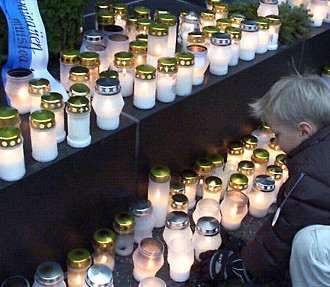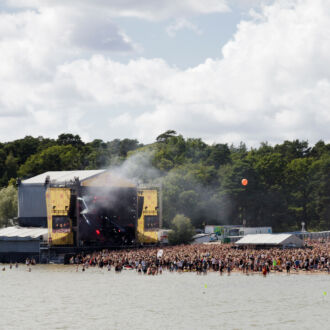The word “forest” means many different things to people in Finland: food, shelter, recreation, business and inspiration. Biohackers improve their bodies and minds by “hacking” their own biology. Read on to see if the traditional connections between the Finns and the forest have something to offer modern health enthusiasts.
Biohacking may even include hardcore methods such as inserting technology under the skin like a sci-fi cyborg, or even trying to change your DNA. That seems worlds apart from visions of evergreen forests, where superhuman beings are absent and the population consists of animals so reclusive that people rarely see them. Let’s see where forests and biohacking overlap.
Wild food goes way beyond
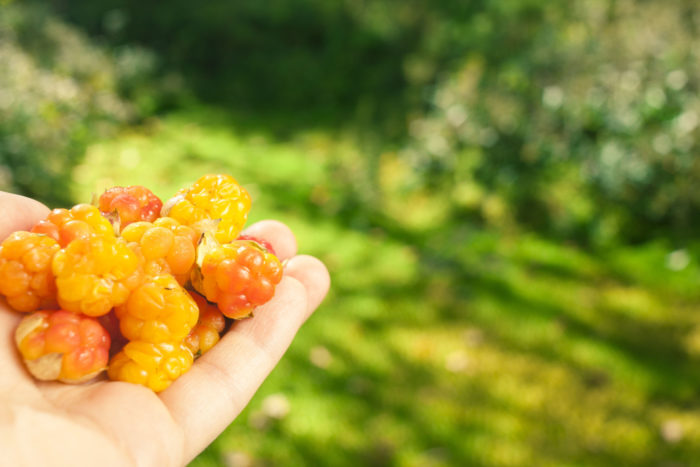
Plants in the wild have to fight hard for their existence. Nutrients exist in higher concentrations in wild plants than in greenhouse varieties. Photo: Elina Sirparanta / Visit Finland
The Finnish concept of “every person’s right” means everyone has free access to the forest, whether publicly or privately owned, and may also pick berries and mushrooms there.
Award-winning chef, author, forager and biohacker Sami Tallberg specialises in ultraseasonal, local, wild food. He could go on and on about the nutrient-dense raw food available in the wild (and in fact he does, when he hosts workshops).
Plants in the wild have to fight hard for their existence. You might even say they exhibiti sisu, that difficult-to-translate Finnish word meaning courage and perseverance. Nutrients exist in higher concentrations in wild plants than in greenhouse varieties.
“Organic food is good, but wild food goes way beyond that,” says Tallberg. His top three recommendations for nutritious health hacks are dandelion detox; spruce-sprout booster for cleansing the airways; and vitamin- and mineral-rich nettles (don’t eat them raw or the leaves will sting you) for any occasion requiring a little Popeye jolt. And pay attention to this next bit, because you’re unlikely to receive spam about it in your email: Yes, nettles are even said to increase libido.
“For me, as a chef, wild food forms the backbone of my work, but my relationship to the forest is also much more holistic than that,” says Tallberg. “The forest is my art gallery, my supermarket and my sanctuary.
“In my work and in my life, I continue the Finnish tradition of always being in sync with the seasons. The first Finns were hunter-gatherers, and I’m proud to be building the current Finnish culinary scene upon their tradition and wisdom.”
The properties of berries
Chefs are not the only ones touting the health benefits of the Finnish foods – particularly berries. In fact, for 20 years VTT Technical Research Centre of Finland has been researching the antimicrobial properties of berries.
In the latest research, VTT found, in collaboration with Helsinki University Central Hospital, an indication that Rubus berries, such as raspberry and cloudberry, may contain a much-needed cure for fighting skin infections caused by antibiotic-resistant bacteria, most often seen in connection with certain surgeries.
The forest, and especially Finnish berries, have long formed a source of Finnish innovations in medicine, food supplements and cosmetics. Finnish company Aromtech provides supplements made from pure sea-buckthorn berries, which are rich in omega-3, -6, -7 and -9 and natural vitamin A and E. The supplements and topical products derived from sea-buckthorn oil convey a range of benefits.
Another company, Pihqa, relies on the centuries-old Finnish tradition of using natural spruce resin to treat various skin ailments. Applied to a scratch, the resin forms an antibacterial film and expedites the cleansing process.
Feeling alive
You can’t hack your biology with food alone, though. This brings us to a favourite Finnish subject: the sauna.
The oldest scientific research on the health benefits of the sauna dates back to 1765. The most widely acknowledged health benefit of visiting the sauna is a boost in blood circulation. Add a cold-water post-sauna dip, and your veins will surely feel alive.
Alternating hot and cold treatments is not unique to Finland, but in this sense the Finns may be at the top of the spectrum for boosting blood circulation with temperature contrasts. Saunas can be as hot as 100 degrees Celsius, and if you go outside to swim in icy-cold water or roll in the snow, the air temperature may be minus 30 degrees.
You can also hack your mind – with endorphins. Biochemical and psychological studies indicate the same result; whatever the cause, you feel good after a sauna.
Barefoot boost
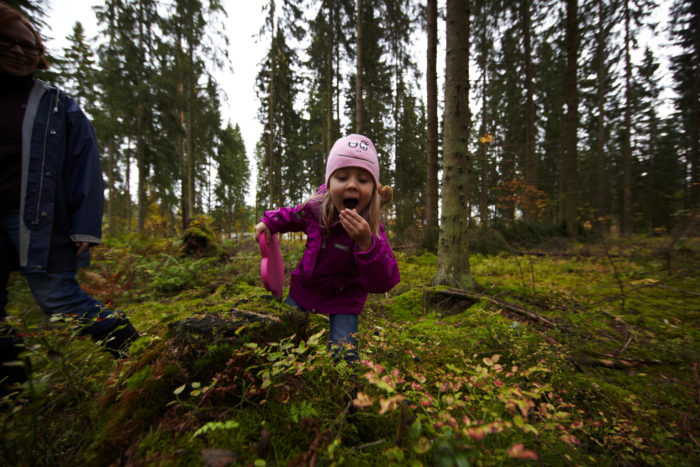
Whenever kids visit a Finnish forest, each gram of soil contains as many as five billion harmless bacteria, which boost children’s natural immune systems in a natural way that protects them from non-communicable diseases.Photo: Riku Pihlanto / Visit Finland
Imagine this: walking barefoot across soft moss. The air is pleasant and has a high oxygen content, thanks to the photosynthesis of the trees all around you. Breathe in, breathe out. Nice, eh?
Well, besides the soft texture of the moss, another factor boosting circulation to your feet is the prickly ends of the pine and spruce needles on the forest floor. You can basically decide which hormone to boost on your forest walk: endorphins (boots on), or adrenaline (boots off).
To a dedicated biohacker, walking barefoot may sound a bit hippy-esque. But the soil you touch makes a difference. Aki Sinkkonen, a Finnish scholar in wildlife biology and nature-based solutions, would like to bring a piece of the Finnish forest to everyone, even in urban areas.
Whenever kids visit a Finnish forest, each gram of soil contains as many as five billion harmless bacteria, which boost children’s natural immune systems in a natural way that protects them from non-communicable diseases. In an urban setting, a sandbox at the local playground contains only 10,000 to 100,000 bacteria per gram, and that’s not enough.
“Finnish forests are an ideal setting to gain healthy exposure to the diverse microbiota because, due to our cold winters, we lack the more dangerous disease-causing pathogens,” Sinkkonen says. And there’s always a forest nearby, usually within walking distance, even in the capital, Helsinki.
Fresh, fresher and freshest air
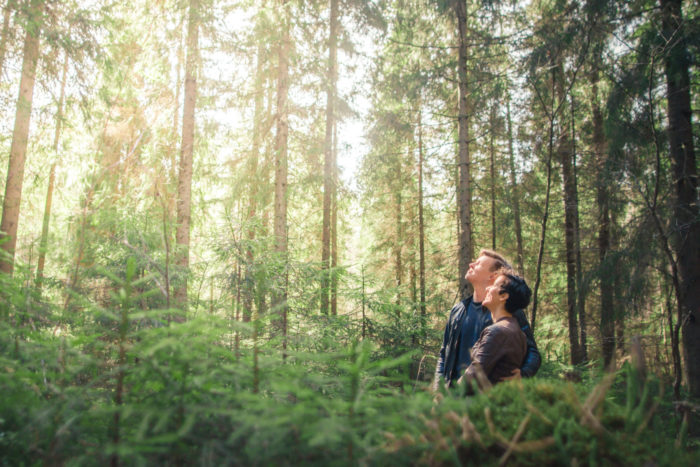
The word “forest” means many different things to people in Finland: food, shelter, recreation, business and inspiration.Photo: Laura Vanzo / Visit Tampere
The further away from the city you are, the more likely you are to come across beard moss, named for the way it looks hanging on tree trunks and branches.
The Finns will tell you that if pollution-sensitive beard moss is growing on old trees, it’s a sign that the air is clean. Finland and the other Nordic countries have the cleanest air in the world, and you know you’ve arrived when you see beard moss.
When you reach that place, your lungs may say kiitos (thank you).
By Virve Ilkka, April 2019
